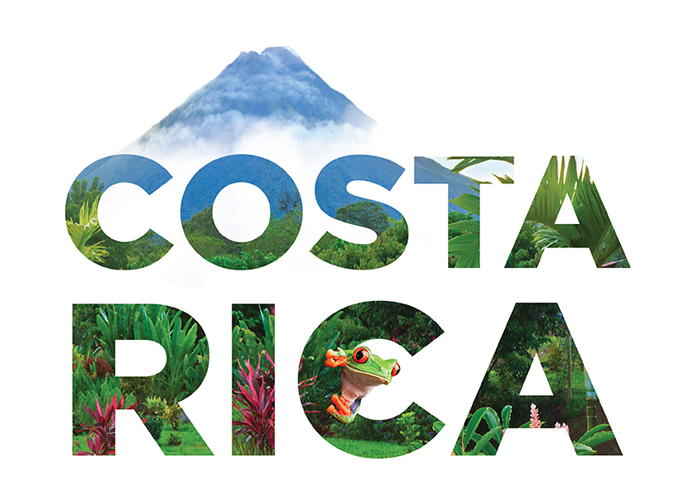From paradise, springs productivity.
Stunningly beautiful and as rich with opportunity as it is in biodiversity, Costa Rica’s strategic location, robust platform of free trade agreements with preferential access to two-thirds of the world´s markets, innovative workforce, proven track record and unparalleled quality of life provide all the necessary elements to enhance corporations´ supply chain strategies and global reach.
For years, the country’s lush rainforests and peaceful shorelines have served as a beacon for travelers. But its stable democracy and commitment to education has ushered in a new era for high-tech investments.
Over the last three decades, the country has taken great strides to diversify its economy. The results are paying off in a major way. In fact, more than 300 high-tech companies and 29 of the Fortune 100 companies have established successful operations in Costa Rica. Companies like Intel, Amazon, Allergan, Dole, P&G, Boston Scientific, Abbott, Hewlett Packard Enterprise and IBM have found success thanks to the country’s innovative and unique essence.
Playing the Numbers Game
If you’re looking for accolades, Costa Rica has them in abundance. The country was named first among High-Tech Exporters in Latin America of Industrial Products by the World Bank, first in Future FDI in Central America and the Caribbean by the Financial Times, and a Top Choice for Establishing a Global Business Services Center in Latin America by the Hackett Group. According to the 2017 IBM Global Location Trends report, Costa Rica ranked among the top 10 global destinations for high-value FDI above Switzerland and Hong Kong and was the only country in Latin America to join the exclusive group determined by IBM Consultants.
“Costa Rica’s human talent has become a key element for HPE’s strategy. From here, we work in developing new products and services, allowing the company to advance one foot ahead in the sector.”
In a land where sustainability is part of its DNA and scalability offers agility, a strong trinity of elements form a living lab for life-centered solutions. A strong cluster of MedTech companies, a dynamic IT and high-tech industry with 76 of the world’s top technology innovators and a strong commitment to biodiversity all work together to enable a collaborative environment for next-wave solutions.
A prime example of this collaborative and innovative environment can be found in the nutraceutical sector. Costa Rica´s roots as an agricultural powerhouse run deep and continue to grow, but today, these same roots are also reaching into non-traditional areas like nutraceuticals — with companies using pharmaceutical-grade aloe or ipecac root to export for use in various health care products.
A Health & Wellbeing Center to the World
These days, medical devices are Costa Rica´s No. 1 export. Since 2007, medical device exports tripled to reach nearly $3 billion in 2018. There are nine times the number of life science companies in Costa Rica than there were in 2009, leveraging the country´s capabilities for end-to-end solutions: from manufacturing to R&D, IoT and e-Health. The sector has grown more sophisticated and has gone from producing Class I to Class III medical devices for various uses like aesthetics, cardiovascular, endoscopy, dental, medication delivery systems, optics and neuro-modulation.
"Costa Rica is home to 72 life-science multinationals which export, day after day, medical devices that save lives around the world. These companies face the challenge of constant reconversion due to the industry’s accelerated global transformation, where the technological component will mark the coming trend. Costa Rica is poised to take advantage of this, and we will undoubtedly continue to be the best strategic partner for the companies hoping to reach this goal," says Jorge Sequeira, managing director of the Costa Rican Investment Promotion Agency (CINDE).
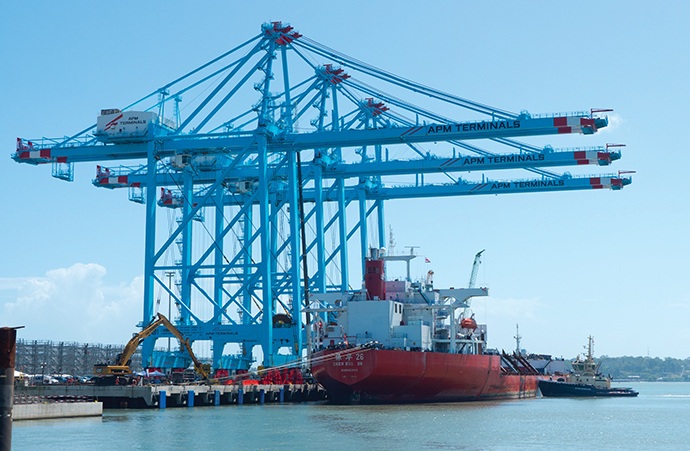
CINDE is a private, non-profit and non-political organization dedicated to attracting foreign direct investment. It has helped hundreds of firms settle in the country. Over the past 10 years, the country has witnessed consistent growth in FDI, with an average growth of 10.3 percent per year since 2003.
Since 2003, Massachusetts-based Boston Scientific has invested more than $130 million in Costa Rica to manufacture its medical products at two facilities: Boston Scientific Heredia (cardiovascular equipment) and Boston Scientific Coyol (endoscopy and urology).
"Costa Rica has proven to be a compelling, performance-driven location for Boston Scientific. Key drivers for our success at two major sites in Costa Rica include highly committed, multi-disciplined local talent; cross-divisional engagement; growth into R&D, process development and lab competencies; and our close working relationship with CINDE, academia, and the government of Costa Rica," said Randy Schiestl, vice president of global technology at Boston Scientific.
Hewlett Packard Enterprise (HPE) has made substantial investments in Costa Rica since it set up operations in 2003. Initially, the company opened its location to manage its IT services for one of its main clients, Procter & Gamble. Now it’s one of the largest private employers in the country and has recently expanded its operations in San José, where it focuses on supply chain and research and development. The latest $11-million investment will add 150 new jobs.
"Costa Rica’s human talent has become a key element for HPE’s strategy. From here, we work in developing new products and services, allowing the company to advance one foot ahead in the sector," said Antonio Collantes, site leader of Hewlett Packard Enterprise Costa Rica.
With a population of 4.89 million and a labor force of 2.3 million, Costa Rica’s workforce sets the country apart. The nation has placed an emphasis on education. In addition to the country’s goal of becoming fully bilingual in the next decade through the Costa Rica Multilingual program, the nation trains students to pursue careers in the growing high-tech sector.
A Logistics Platform to Reach the Americas and the World
Where else in the world can you go from the Caribbean to the Pacific in just five hours?
Costa Rica has been a meeting point for cultures and trade since its earliest days. As a crossroad in the heart of the Americas it’s easy to connect North to South, East to West. Native tribes used the land as a bridge to join their communities and flourish together. That same ancestral knowledge continues to be seen across the country today in businesses, education and opportunity.
The country has leveraged this location to enhance it with top talent formation in logistics, supply and engineering fields where university graduates grow by over 6 percent annually. Combined with a robust network of free trade agreements, growing connectivity and infrastructure, Costa Rica is an ideal site to reach the Americas and the world.
A free trade regime designed as a versatile framework enables individual companies to improve efficiencies and provide better customer service. Free zones are developed by the private sector and are able to meet even the most demanding needs of multinational industry sectors such as health care and fresh or frozen goods.
In 2015, LatAm Logistic Properties opened its headquarters in San José as an industrial property company focused on the Latin American region countries of Costa Rica, Colombia, Peru and Panama. Jaguar Growth Partners, based in New York, are strategic partners in the development.
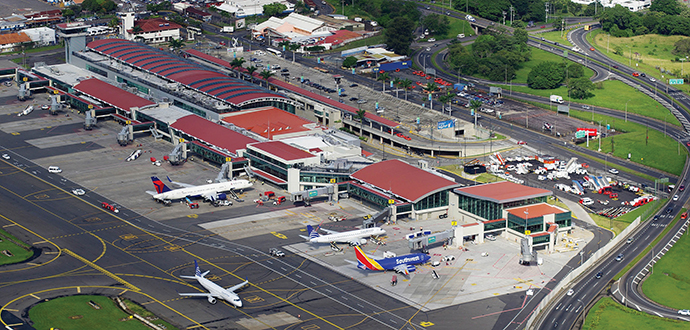
Costa Rica’s strong middle-class population and stable economy led to the development of the 37-acre (15-hectare) property in the city’s "Radial Coyol" logistics hub, which offers easy access to the San José International Airport and the country’s two major highways: Route 1, the Interamerican Highway; and Route 27, which connects San José to the Pacific port of Caldera.
"The hub is centrally located with very good connectivity to both coasts and the main seaports on the Atlantic and Pacific," explains Aris Stamatiadis, manager of Central America at LatAm Logistic Properties. "If we have to ship out to either the eastern or western parts of the U.S., that’s very easy to do. It’s very nearby the main population areas, not only in North America but also in South America. It’s a very strategic place to receive merchandise and distribute."
Stamatiadis notes that multinational companies including San Diego-based PriceSmart, Seattle-based Expeditors, Mexican dairy producer LaLa, Kraft-Heinz and Mexican electronic manufacturer Mabe are more comfortable with the Class A facilities for logistics available in Costa Rica.
"One of the keys to PriceSmart’s success is a very efficient and advanced logistics operation. Our new Regional Distribution Center in Alajuela, Costa Rica, will support this effort. Having a regional facility should enable PriceSmart to adequately stock multiple sales locations in Central America and positively impact service and value for our members," said Rodrigo Calvo, executive vice president for real estate of PriceSmart Inc.
Going East, West, North or South Is a Snap
Costa Rica´s international trade dynamism has nurtured an ecosystem of players and suppliers ranked No. 1 in quality of supplier base by the World Economic Forum, and premium partners to enhance supply chain strategies are no different. The country has a host of global and local boutique, specialized firms in freight handling including Expeditors, Kuehne+Nagel, DHL, Fedex, UPS, Pegasus, Mudanzas Mundiales and Logitsa.
Logitsa Cargo Service is a short distance away in Alajuela, Costa Rica, in front of the San José International Airport, and is one the country’s fastest-growing logistics companies. Founded in 2009, the firm offers customs brokerage, freight forwarding through air, ocean and land, bonded warehouse space and local transportation.
Marvin Villalobos Álvarez, owner and CEO of Logitsa, says the country’s location and overall business climate is a major advantage for companies in terms of logistics. "Due to its strategic location at the center of Latin America, Costa Rica has become a preferred hub for companies to settle and invest," he says. "With coasts on both sides of the country, ports in the Caribbean and the Pacific make available routing for cargo to and from different places in the world. International airports in Costa Rica connect people and cargo with many cities in the world promoting the trading process."
"The business climate in Costa Rica is welcoming," Villalobos says. "Companies in this country can thrive, and the economic and political stability provides a sense of certainty to investors."
Private organizations and the Costa Rican government make efforts to ensure investors are well guided on the process they need to follow, and new regulations facilitate logistics operations to enhance performance under the free trade zone.
Some regions offer more possibilities for optimized supply chain operations. For instance, Guanacaste in the North Pacific just inaugurated a new cargo facility at Daniel Oduber International Airport. Puntarenas in the Pacific Coast opened a new platform at the Caldera Port, and Dutch logistics titan APM Terminals is building a brand-new $1-billion port on the Caribbean coast.
Free Trade Powerhouse Flexes its Muscle
According to Procomer, the agency in charge of promoting Costa Rican exports of goods and services, Costa Rica has free trade agreements which cover two-thirds of the world’s gross domestic product and over a third of the world’s population. Costa Rica is the only Central American country with a free trade agreement with China, and maintains 14 free trade agreements that provide access to 57 global trade partners including the U.S., Canada and the E.U.
Companies choosing to make new investments in Costa Rica can take advantage of tax incentives at industrial parks and office buildings throughout the country’s metropolitan areas.
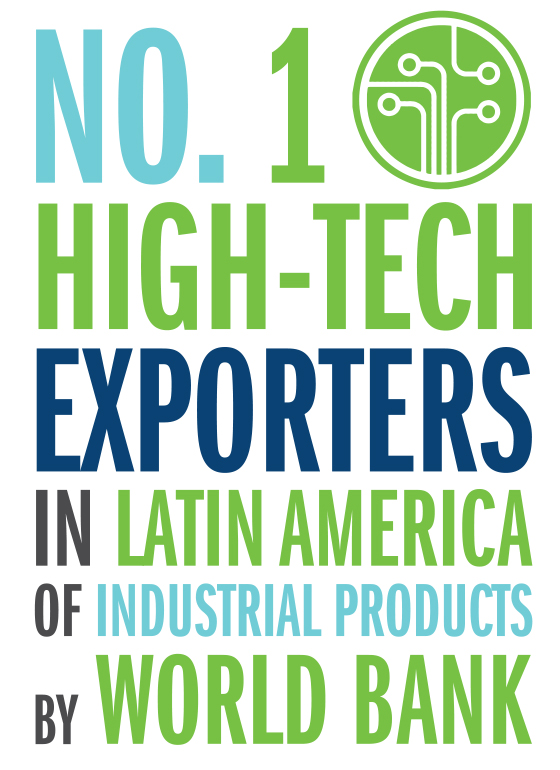
"For MNCs or logistics companies the Free Trade Zone regime can be a valuable tool to optimize its supply chain strategy." says Jorge Sequeira from CINDE. "The free trade zone in Costa Rica can allow companies, for example, to import goods free of tax and re-export free of tax. It provides incentives on tax exemptions on income, export, import and other duties for logistics services companies which meet its requirements. The regime is a longstanding program which meets World Trade Organization standards."
Several business parks offering free trade zones exist around the country’s major metro areas, including Coyol Free Zone and Business Park in Alajuela, just 4.5 miles west of the San José International Airport. The high-tech park opened in 2007 and is occupied by several medical and advanced manufacturing companies including Medtronic, Abbott Vascular, Phillips and Moog.
Also, in Coyol is BES Free Zone and Greenpark, where the distribution center for pharmaceuticals and medications of the National Insurance Institute of Costa Rica is located, as well as other industry leaders.
La Lima Free Zone and Business Park is another state-of-the-art development in Cartago that caters to advanced manufacturing, life science, logistics, supply and services-based businesses which include Aligh Technologies, German electronics component manufacturer Zollner, Edwards LifeSciences and the future facilities of Swedish ostomy device manufacturer Coloplast.

Handling Bigger Ships at a Better Price
Several key investments have helped to amplify the country’s logistical advantages, especially as larger ships are able to access the Panama Canal.
In February, Netherlands-based APM Terminals is set to open Costa Rica’s newest deep-water port on the Caribbean coast. The 80-hectare Moín Container Terminal was built on an artificial island and is on track to become the most efficient port in Latin America. APM Terminals operates a Global Terminal Network in 60 countries.
"Costa Rica is preparing to inaugurate much more than a container terminal. The country is inaugurating a new era in its commercial relations with the world, and this will have a direct impact on the country’s economy and an important advance in the global connectivity ranking," said Morten H. Engelstoft, CEO of APM Terminals.
The terminal’s 1,500-meter quay offers an access channel that is 18 meters deep and is equipped with 39 electric container cranes and six Super-Post Panamax gantry cranes. The port will be capable of handling container ships of up to 8,500 TEUs. The new port is expected to raise commerce in Costa Rica by 23 percent, according to a Qbis Socioeconomic Impact Study. The study estimates Costa Rica’s trade costs will decrease by up to 40 percent. For exporters of perishables, like pineapples, the new port is expected to hedge shipping costs and may reduce overall trade costs by 15 percent.
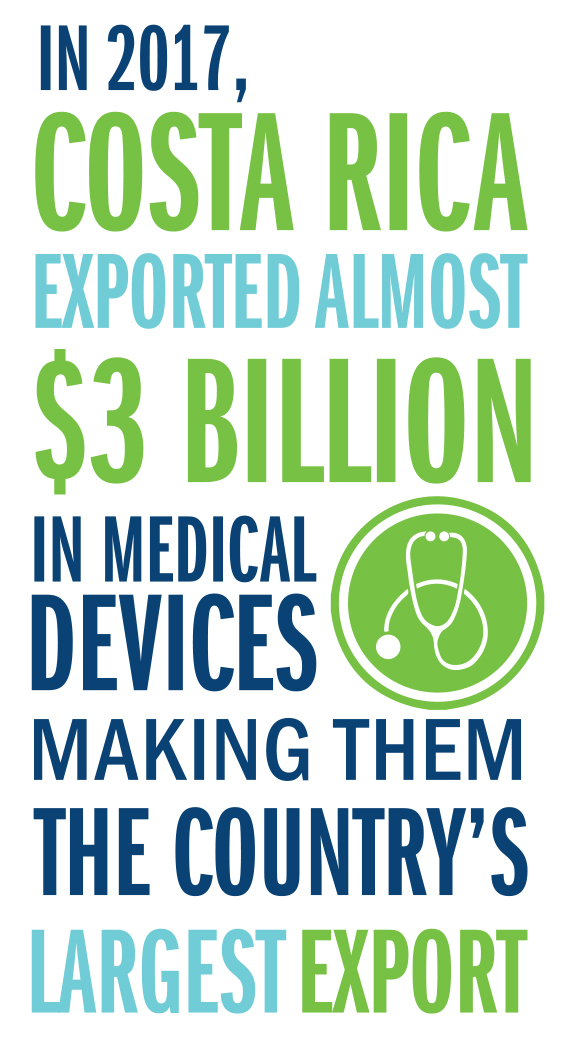
"The new APM Terminal is going to change the whole way of handling cargo in and out of Costa Rica," says Carlos José Zúñiga, president of Grupo Mudanzas Mundiales, an integrated logistics, storage and mobility company focused on international trade. "Imports and exports will be expedited. It’s saving a lot of time, and the security that this new port will give you in the handling of cargo and the time savings will benefit the business."
The Port of Caldera in the Central Pacific is a key to Costa Rica’s logistics success as well. Over the last eight years, a $55-million investment has increased its container unloading capacity from 17 to 44 containers per hour and has more than doubled overall productivity.
Connectivity Gives Businesses a Boost
As the main point of entry to Costa Rica, Juan Santamaria International Airport in San José has 936 weekly flights to 45 destinations around the world. Each year the airport receives more than 4.8 million visitors and is the second-busiest airport in Central America after Tocumen International Airport.
Increasingly, the country sees greater connectivity by air. Businesses flourish as a result.
"Our route development program has been able to significantly increase flights to Europe, including carriers like Air France, Lufthansa, Edelweiss and KLM," says Rafael Mencia, executive director of Aeris. "Our service to the United States continues to be more solid and diversified with American Airlines, United, Southwest, Spirit, Jet Blue and Delta as the main carriers. We have direct flights to the main cities in the United States including New York, Miami, Dallas, Los Angeles, Fort Lauderdale, Charlotte, Chicago, Houston, Phoenix, Minneapolis, Denver, Boston and Baltimore; as well as to Canadian destinations such as Toronto, Calgary and Montreal. The development of tourism is the main reason for the traffic increase and the success of the air service development program, but it’s complemented by the advantages and increased air cargo given the country´s export capacity. Thus, it provides a sound and more comprehensive business model for airliners. Costa Rica has a very good name in Europe and the United States thanks to political stability and good economic development."
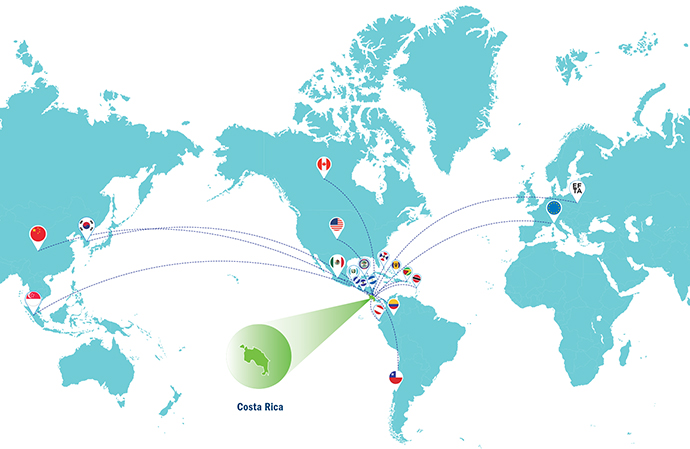
In the past 12 months, the airport has handled 80,000 metric tons of imports and nearly the same amount of exports. Cargo is handled by UPS, Lan Cargo, FedEx Express and DHL, among others.
In July, DHL opened its expanded customer support facility in Heredia to serve its Americas region. The company’s investment of $15.6 million expanded its financial, customer and IT services as well as its human resources operations. More than 650 people work at the facility, with plans for 150 more in the next two years.
"Our divisions are growing, bringing more jobs to Costa Rica as the need for support in various areas increases," said Mike Parra, CEO of DHL Americas Region. "This new DHL Customer Support Facility reflects the shift of DHL to more value-added activities, such as digitalization in customer service to enhance the customer experience."
“The country is inaugurating a new era in its commercial relations with the world, and this will have a direct impact on the country’s economy and an important advance in the global connectivity ranking.”
DHL has 50 percent of the market share in shipment volume in Central America and operates flights to and from Costa Rica, Guatemala, El Salvador, Honduras, Panama, Mexico and Miami.
The Daniel Oduber International Airport in Liberia, in the Guanacaste region, operates more than 120 weekly flights to cities in the U.S. and Canada. Primarily used as a passenger airport, its cargo capacities are growing with its convenient access to the Pan-American Highway.
With Costa Rica’s strategic location, moving goods into and out the country is easy. In 2017, some 24 percent of Costa Rica’s exports left the country via air, 53.5 percent by sea and 21 percent on land. With ports on both the Caribbean and Pacific Coasts, transporting products to either coast of both North and South America takes less time and saves companies money.
The new state-of-the art Caribbean port in Costa Rica will complement the new expansion at the Panama Canal. Though the canal has an increased capacity, certain Post-Panamax vessels are too large to pass through the canal. This makes Costa Rica an ideal platform for freight fragmentation, as well as a more productive point for cargo handling into Central America — a market of 60 million people.
"We have done several analyses with experts to assess that efficiency of cargo handling to Central America. Just by lowering freight in Moín as opposed to Colon, companies can save $1,300 for every 20-foot container in land transportation alone, not to mention the time saved on at least a 700 kilometers distance," explains Karin Lachner, head of marketing for CINDE.
Costa Rica’s logistics advantages are only going to continue to grow as the market matures. The opportunities are as bountiful as the land itself.
This Investment Report was prepared under the auspices of the Costa Rican Investment Promotion Agency (CINDE), a private, nonprofit and apolitical organization that provides investment services for free. For more information, visit www.cinde.org or call its offices in New York at 212-984-0631 or San José, Costa Rica at 506-2201-2800.
